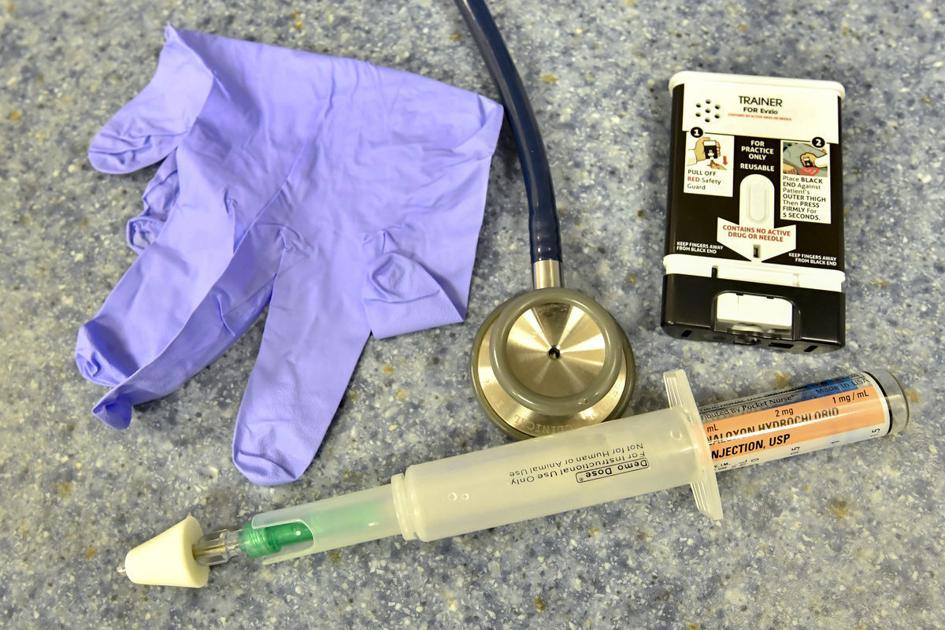
19 Apr WVU: Fentanyl deaths up 122 percent in W.Va. | News
MORGANTOWN — Even as deaths relating prescription opioids are starting to decline, deaths related to fentanyl have gone up by more than 100 percent in about two years.
West Virginia University researchers Gordon Smith, Marie Abate and Zheng Dai conducted an extensive study funded by the National Institutes of Health. Together with help from medical examiners from the West Virginia Department of Health and Human Resources, the researchers analyzed all drug-related deaths in the state from 2005 to 2017.
They discovered that between 2015 and 2017, deaths from fentanyl were 122 percent of what they were between 2005 and 2014. On the other hand, prescription opioids played a role in 75 percent fewer deaths between 2015 and 2017 than over the previous 10 years.
Smith said this spike in fentanyl-related deaths in a relatively short time period can be traced to a surge in illegal exports.
“Up until then, people who were shifting from legal prescription drugs to illegal drugs were shifting to heroin and opioids coming in from Mexico and other places,” he explained. “But then people started manufacturing fentanyl in China, setting up clandestine labs, staying one step ahead of drug-enforcement agencies.”
According to the Centers for Disease Control and Prevention, fentanyl is 50 times stronger than heroin, while carfentanil, an analog of fentanyl, is 1,000 times stronger than morphine and heroin.
Dr. Suzanne Bell, with WVU’s Department of Investigative and Forensic Science, said fentanyl and carfentanil also pose a risk to law enforcement personnel, especially drug detection K-9 units since these substances are often cut with regular heroin to save costs with the users often not knowing about it until it’s too late.
While West Virginia leads the nation in fentanyl-related deaths and has the highest per capita rate of overdose deaths overall, the increase of fentanyl-related deaths is manifesting nationally and was still climbing as of 2017 data.
However, the Mountain State does have something in its favor: Its medical examiners pinpoint the cause of every drug-related death, and the relevant facts populate a statewide forensic drug database maintained at the WVU Health Sciences Center. The database includes such information as the decedent’s demographic information, cause of death, toxicology testing results, other medical conditions present and recent prescriptions for controlled substances.
This database gives scientists, healthcare providers and law enforcement officers insight into drug-misuse trends as they unfold.
Abate, who directs the School of Pharmacy’s West Virginia Center for Drug and Health Information, established the database in collaboration with the West Virginia Office of the Chief Medical Examiner in 2005.
“The extent of decedent information found in this database is unique nationwide,” she said. Abate, along with Smith, received prior funding from the West Virginia Clinical and Translational Science Institute, the WVU Injury Control Research Center and the National Institute on Drug Abuse for research into drug misuse.
She said that database can help direct public-health resources to where they can do the most good — and promptly enough that they’re worthwhile. For example, the data may suggest which towns need greater access to naloxone to treat a preponderance of overdoses and may help scientists decipher the chemical makeup of brand-new fentanyl analogs as soon as they hit the street.
Furthermore, China recently announced it would begin regulating all fentanyl-related drugs as a class of controlled substances. This is something sought by U.S. policymakers as a means of stemming the flow of imports.
Still, even with increased supplies of naloxone, Smith said this problem is one with no easy solution in sight.
“One of the proven ways to reduce overdoses is to decrease the number of people who are addicted and using,” he said. “But with fentanyl, you could halve the number of addicts in West Virginia, and the overdose rate could still go up because the strength of the drug coming in is so much stronger and can vary widely from one day to the next. This is an absolute quandary.”
[ad_2]
Source link



No Comments